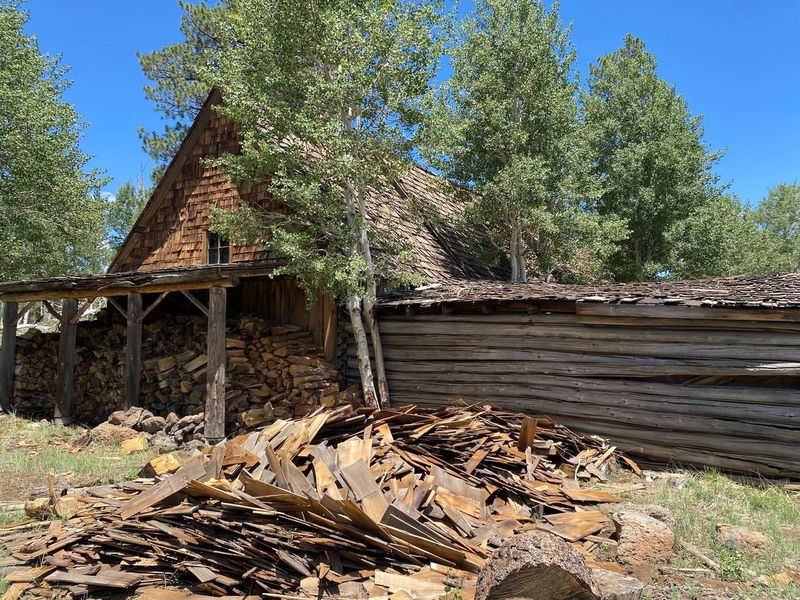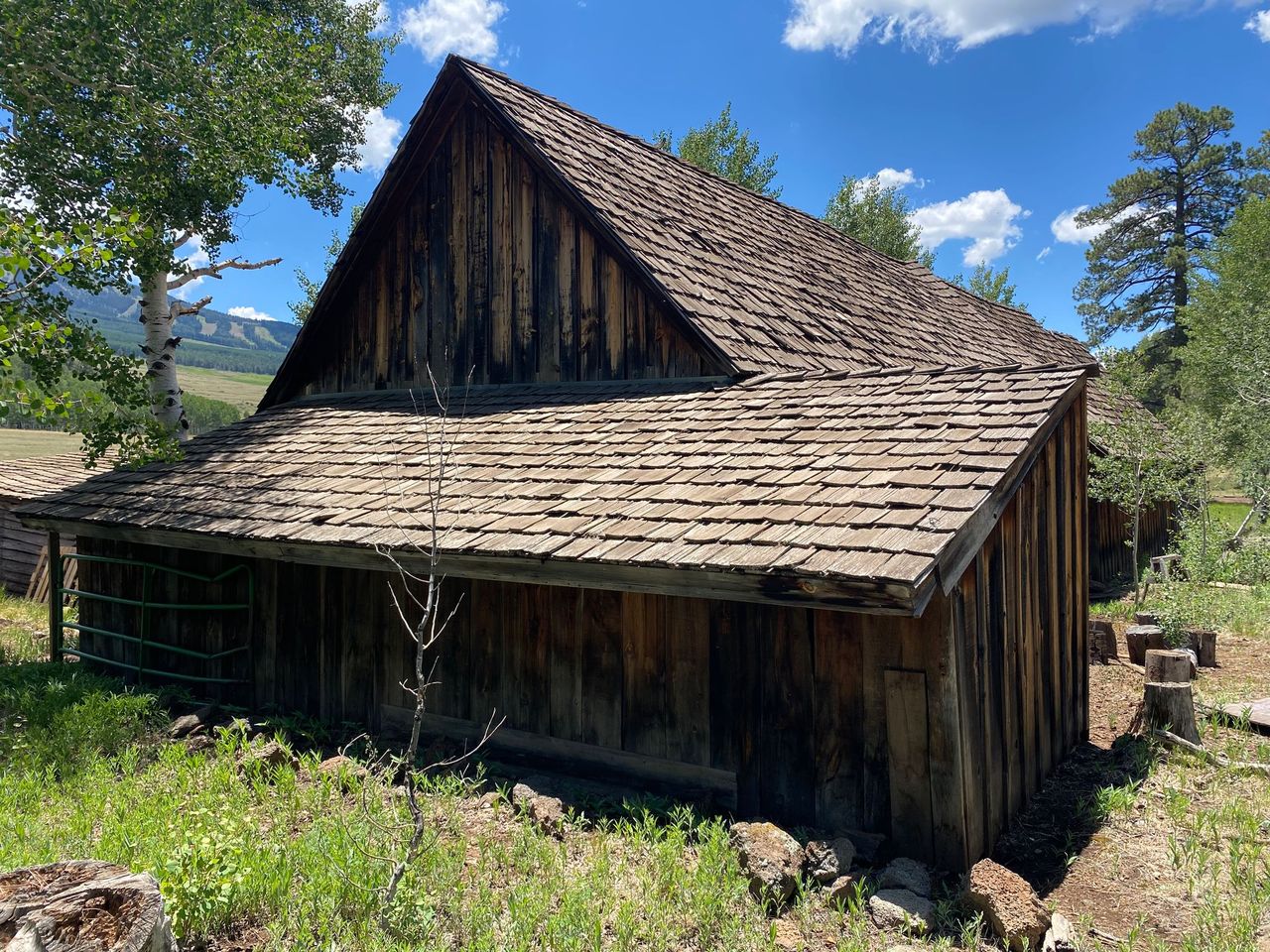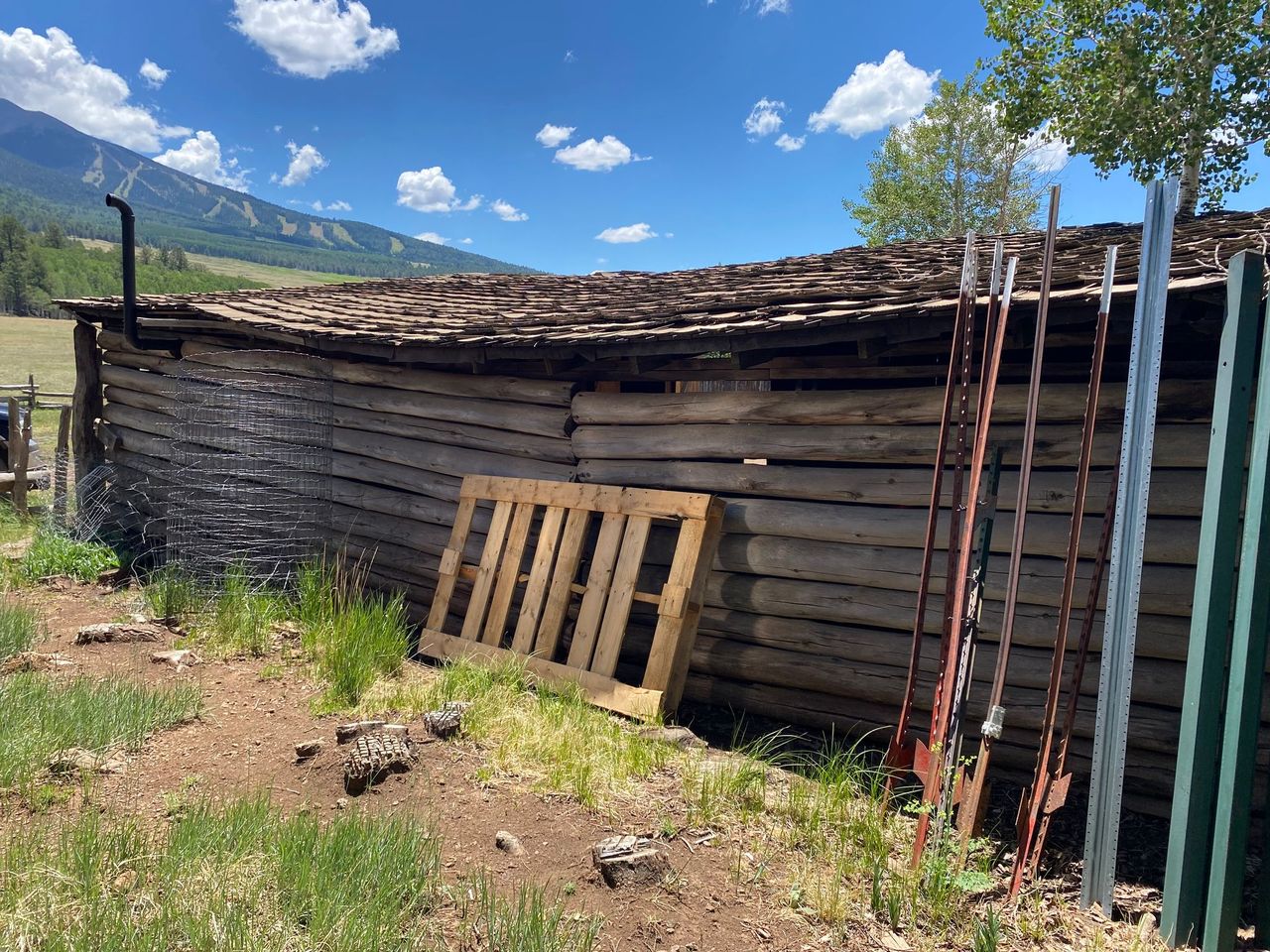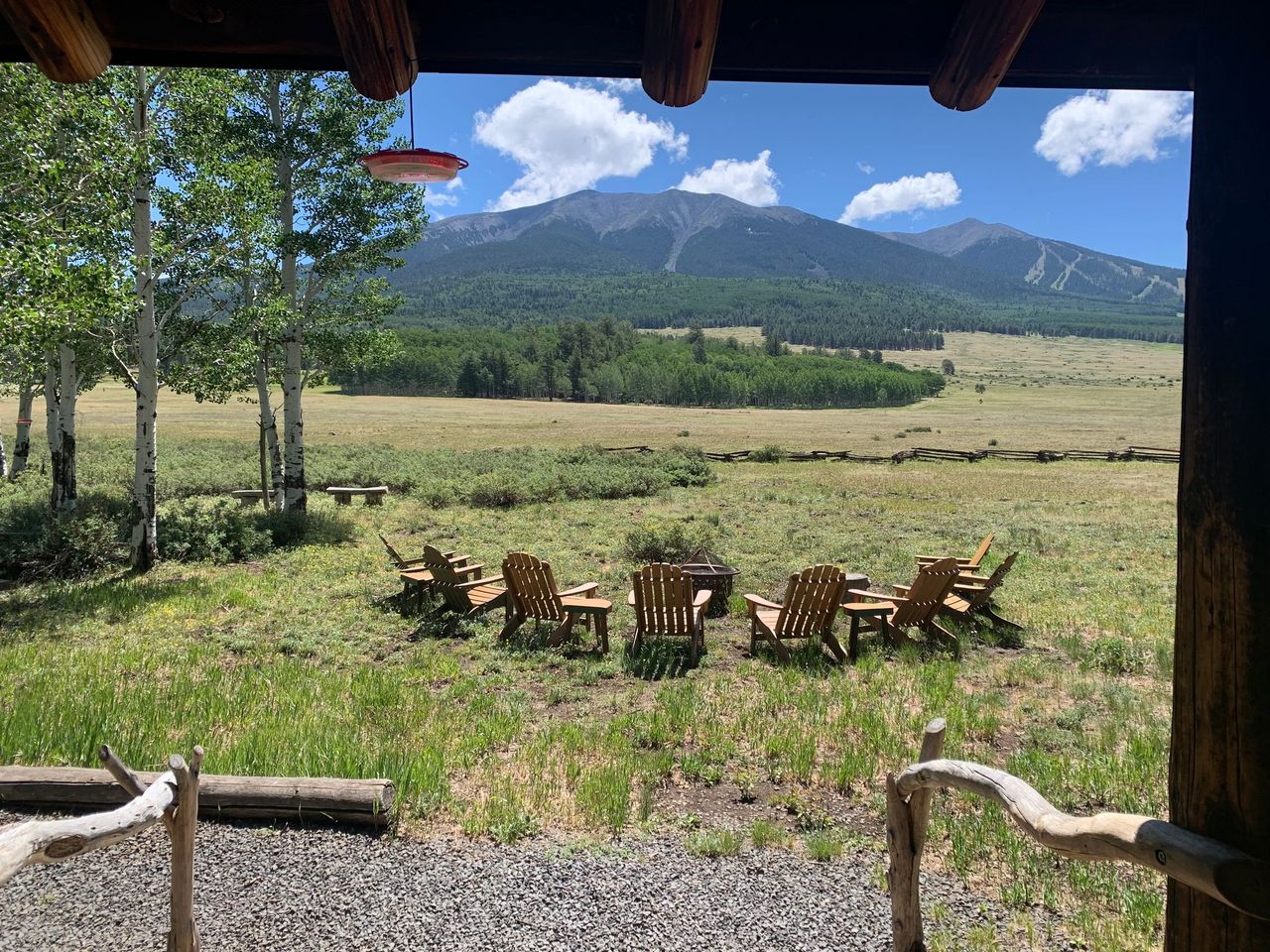Hart Prairie Preserve Barn, AZ 2024

In the shadow of the San Francisco Peaks we make our next stop at the historic Hart Prairie Preserve, an early 1870s homestead that helped drive tourism for the Grand Canyon!
PROJECT PARTNER: The Nature Conservancy
SESSION DATES: September 1-6, September 8-13, and September 15-20
PROJECT SUPERVISOR: Sarah Mees!
ASSISTANT PROJECT SUPERVISOR: Pete Cecil!
CREW LEADER: Matt McKay!
Project Site Description & History
Lining the western slope of the sacred San Francisco Peaks sits the Hart Prairie Preserve, a stunning 245 acre homestead in the backdrop of the dormant Humphrey’s Peak, a volcano named after a Civil War-era Union General and Arizona’s tallest peak. Just 30 minutes north of the bustling town of Flagstaff, the Hart Prairie Preserve is an almost mythological landscape made up of old growth ponderosa pine, active elk and deer herds, over 250 species of plants, and home to a globally rare community of Bebb willows.
From 7000 B.C. to 300 B.C. Archaic Indian communities occupied the area followed by the Sinagua and Cohonina tribes who arrived in 700 A.D., splitting the eastern and western slopes of the San Francisco Peaks. By the mid 1800s, Euro-American settlers pushing westward across the United States arrived on the western slope, and in 1877 Frank Hart began work on the first log cabin of what is now the Hart Prairie Preserve. Although he was unable to finish the cabin before his first winter, European immigrant Augustus Dillman Freudenberger would finish the partially completed cabin during the early part of the 1880s and begin homesteading, naming it the Fern Mountain Ranch. From 1892 to 1901 the Fern Mountain Ranch would play a significant role in Northern Arizona history, serving as the first stop on the tri-weekly stage run from Flagstaff to the Grand Canyon, a move that would drive the early stages of Grand Canyon tourism.
In 1928, the property was sold to Harold S. Colton, founder of the Museum of Northern Arizona, who transferred the property to his sister and her husband, Suzanne and Robert Wilson. In 1977 the site was listed on the National Register of Historic Places, and by 1994 the Wilsons donated the majority of the property to The Nature Conservancy for land conservation purposes and stipulated that the structures must be maintained in accordance with historic preservation standards.
HistoriCorps is humbled to engage volunteers in the restoration of the barn at the Hart Prairie Preserve in cooperation with The Nature Conservancy. We anticipate spots to go fast and space will be limited over the course of the three scheduled volunteer sessions. Camping options are still available, but our fantastic partners at The Nature Conservancy have offered free lodging for volunteers at the historic log cabins onsite. We encourage all volunteers to take advantage of this incredible offer and enjoy the comforts and serenity of the private log cabins reserved for HistoriCorps volunteers. For more information about the Hart Prairie Preserve, please visit their website.




Location and Logistics
SESSION DATES: September 1-6, September 8-13, and September 15-20
Please plan to arrive at the campsite no earlier than 5pm and no later than 7pm on the first day of your session.
LOCATION: Located approximately 15 miles north of Flagstaff, AZ!
ACCESS: ![]()
![]()
![]()
![]()
![]()
HistoriCorps will provide lodging for volunteers at this project! If you choose to not stay at the provided lodging, tents, truck campers, and campervans will have access to our campsite. Showers are available, but dogs are not allowed at this site.
WEATHER: Anticipate highs in the 70s and lows in the 50s. Weather conditions may be rainy, cloudy, or sunny. Volunteers are responsible for checking weather conditions before their session begins, and packing appropriately. Save
Scope of Work
SCOPE OF WORK DIFFICULTY: 
HistoriCorps is committed to educating and training volunteers in preservation skills, with an overarching mission of inspiring a preservation ethic in all those involved. Learning and working alongside expert HistoriCorps field staff, volunteers and applying the traditional skills necessary to restore the Hart Prairie Barn:
- Improve foundation and repair or replace sill and spandrel logs as needed
- Repair and replace deteriorated wall logs and wall framing posts
- Replace cedar shake roof
- Repair or replace roof framing
- Repair or replace deteriorated deck boards
- If time allows, repair or replace board and batten siding along with fascia boards
- Rehabilitate windows, doors, and trim
Please note: Tasks vary by day and by week, depending on a variety of factors including: weather, project priorities, previous groups’ work, and more. Though it is likely you will get to learn and practice most or all of the above tasks, it is not guaranteed. The higher percentage of the scope a particular task is, the more likely you will get to practice it.
Sign Up!
We’re thrilled this project has inspired you to volunteer!
CLICK HERE TO REGISTER!
Visit our Job Calendar to see spaces are available!
*All registrations submitted to projects at capacity will be automatically added to our waitlist.*
CANCELLATIONS effect our ability to complete projects. Please register only if you are certain about your ability to participate.
You will know your registration was successful when you receive a confirmation email. Contact volunteer@historicorps.org for assistance.
HistoriCorps does not charge for its volunteering projects. HistoriCorps relies on donations to continue engaging volunteers to save significant historical sites across America for generations to come. Your donation of any amount will make an incredible difference! Increase your impact – make a generous gift today.
Volunteer Logistics, Policies, and Advice
We’re so glad you’re interested in joining this project! If you’re new to our community, review the Volunteer FAQ first! Please note the following logistics and policies:
- Volunteering with HistoriCorps is free! We will provide all meals, tools, training, equipment, and a campsite or shared indoor lodging. Dinner is not provided on the first night.
- Volunteers are responsible for bringing their own gear, work gloves, sturdy work clothes and boots, and appropriate sleeping equipment. Check the average temperatures before you start packing – the nights and mornings may be colder than you anticipate! Then, read this advice about how to stay warm when tent camping in colder places.
- Campsite accessibility varies by project. Some projects can accommodate tents only; others can accommodate small RVs. Please review the project site description above for more information, and if you’re still not sure, email volunteer@historicorps.org for help.
- If this project does not offer showers, you might want to consider bringing a solar shower or research other methods to clean up after the work day.
- Volunteer crew sizes generally range from 4-8 volunteers, with two HistoriCorps staff that lead and train volunteers in the work.
- Safety is one of HistoriCorps’ top priorities, and volunteers can contribute to a safe working environment by ensuring their physical fitness is adequate for the work. See above for this project’s scope of work and difficulty level. Please, call us if you are not quite sure if a project is a good fit for your skills or fitness level. We may be able to suggest a project more suitable and enjoyable for you.
- Hard hats, eye protection, ear protection, gloves are standard personal protection equipment (PPE) required on all projects. Hard hats must be worn at all times on the project site, unless working in a designated safe space. Field staff will train volunteers on correct use of PPE.
- Dogs are generally allowed to accompany their humans in project campsites (actually, we love having dogs join us around the campfire!). Dogs are not permitted on the job site for everyone's safety. HOWEVER: HistoriCorps also follows the rules and regulations of our project partner. If the project partner does not permit dogs onsite then HistoriCorps is no exception. Please ask HistoriCorps or the project partner directly if you have any questions about whether Fido is welcome.
